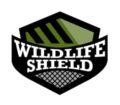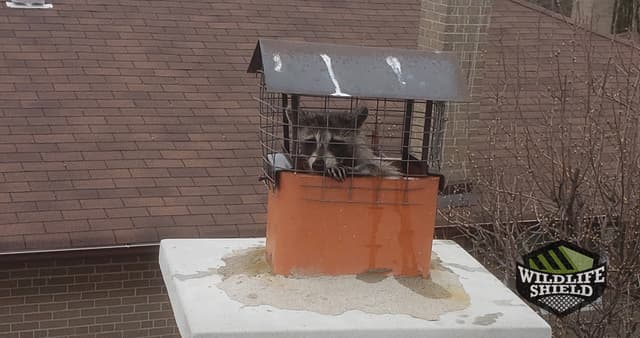At Raccoon Control, we are often asked by our clients how to get rid of raccoons in the chimney. It’s our job to get rid of raccoons from your property, and this is one of the cases we often deal with. In most cases, when a raccoon gets into your home chimney, the owner will be able to detect them. You will be able to hear noises just above your fireplace.
You will also be able to know you have a raccoon in your chimney after seeing it visually climbing up your roof. At this point, it is very important to identify if indeed the animal in your chimney is, in fact, a raccoon. Squirrels have also been reported to climb up the home chimney. It is because of this that a professional inspection service is important. Our professionals at raccoon removal Ajax will be able to perform a thorough inspection of your roof, to determine if you have a raccoon, and how many they are. Raccoons are bigger and louder than squirrels. However, the acoustics of chimney could get you thinking otherwise.
Why do Raccoons go into the chimney?
Raccoons love hollow spaces, and just like the hollowed trees in the forest, your chimney offers the perfect space for them to call home. The main motivation behind raccoons climbing up your chimney or attic is to give birth and raise their young. This is almost always the case. Your chimney offers a secure, warm and dry place to live. Raccoons are excellent climbers; they never have a problem getting up and down your chimney. They normally use low hanging branches to get up your roof, but depending on how your house is built they could easily get up the roof into your chimney.
Things to avoid when getting rid of raccoons
Getting raccoons out of your chimney isn’t an easy task, that is why it is a job best left for professionals. It’s important to note that a raccoon in your home is often a nursing mother with her litter, and it’s important that they are humanely removed from your home.
Do not start a fire
Under no circumstance should you start a fire, if you attempt to do this, you will be roasting the young raccoons.Baby raccoons are not able to move around for at least six weeks. During this period, they are completely dependent on their mother. Starting a fire might also force the raccoons out into your home, at this point they will be agitated and aggressive.
You can’t trap them either
Trapping isn’t the best method to remove raccoons in your chimney. As stated earlier, raccoons will only get into your chimney or attic to give birth and raise their young. Using a trap, in this case, will only capture the adult raccoon leaving the young ones who are completely dependent on their mother to starve and die. We don’t recommend using a trap to trap raccoons in your chimney.
Don’t seal off the entry point
Another mistake some homeowners do is to seal off the entry points once they spot the adult raccoon has left. By sealing off the chimney, the baby raccoons who are dependent on their mother won’t be able to get out, and will eventually die of starvation.
If you are going to get rid of the raccoons in your chimney, it is important that you get the mother out together with her babies safely at once. Make sure no babies are left behind during this operation. While its common for raccoons to make a mess in your chimney, it’s better to get them out alive. Getting them out dead is expensive and unsanitary for you and your family.
How to get rid of raccoons in your chimney
Getting raccoons out of your chimney is not an easy task, it requires special equipment, skill and a mix of techniques to get it right. That is why it is best to have a professional help you get rid of them. A professional service will not only remove the raccoons from the chimney, but they will also ensure that they never come back. However, if you are determined to get rid of the raccoons by yourself, here are a few steps to getting the job done.
Make your presence known, bash and bang, be loud enough. You could place a loud radio at the top of your chimney, and play it all day. Raccoons move into your chimney looking for a safe place to nurse their young, playing music is good enough to convince them that your chimney is not a safe place after all. This trick often works, and the mother raccoon might remove her young overnight to a different location. Before you cap the chimney, make sure you thoroughly check your chimney for babies.
If using noise to evict them forcefully doesn’t work as planned, you could try using the scent of a dominant male raccoon. Naturally, a male raccoon will kill any offspring that isn’t his, and the females know this. You can get raccoon eviction fluid or paste at your local store. Soak a rag into the fluid and drop it down the flu. Be careful not to remove the damper before they move out since the babies might fall into your house and the female will try protecting her young. This method has a high success rate.
In case the eviction fluid method fails, you have no choice but to wait or call professional help. Raccoons can’t mess up your chimney, its brick, and pipe. You might have to put up with their mischief, noise and hope they do not invade any delicate areas such as your attic. Raccoons will take care of their young for up to 10 months after which they will move out on their own. At this point, you can seal off your chimney with a cap.
If the eviction fluid fails and you are not willing to live with the risk of raccoons for three months, and you still don’t want to get professional help, you can remove the litter by hand. This is an operation that needs to be done by an experienced person, do it at your own risk.
The litter normally has about five young raccoons. Under three weeks old they will be extremely tiny with shut eyes. At six weeks they will be fairly mobile. Ensure you are wearing protective clothing, ahead lamp, respirator mask, gloves, and long-sleeved pants. Place the litter in a pillowcase. Expect some aggression from the adult, and she will like a bite or scurry out the chimney. Remember, do this at your own risk.
Place the young raccoons in a cardboard box safely with a blanket and hot water bottle outside next to where the mother crawls down. Monitor the box and wait for the mother to go for it, at this point you can safely seal your flu with a steel cap.
It is not advisable to get rid of raccoons on your own. If you suspect that you have raccoons in your home, contact your local pest removal company to handle the job for you. They are experienced and have the skill and know how to remove the raccoons safely back into the wild humanely. Contact Raccoon Control for more information about our removal services: 647-557-7932
Raccoons Can Defecate on Your Roof
Raccoons are cat-sized mammals characterized by their unique facial mask and ringed tails. Although they usually live in marshes and forests, they can invade your property in search of food and may make their nests on the roof of your property.
Realizing that you have a raccoon lurking around your home is not fun. This is a wild animal known for causing serious property damage. But, more importantly, raccoons are known for the potentially dangerous poop they leave behind. And it is necessary to have a professional wildlife removal company remove the poop and thoroughly decontaminate the place to prevent your family and pets from contracting serious infections.
Do you need to remove raccoon poop on the roof? Get a free quote now
YOU NEED A PROFESSIONAL DECONTAMINATION SERVICE
For proper cleaning and disinfection of the areas with raccoon droppings, you need to involve the services of a professional. The professional has the right tools and materials to ensure complete decontamination of the area.
Article Updated: June 26, 2019

